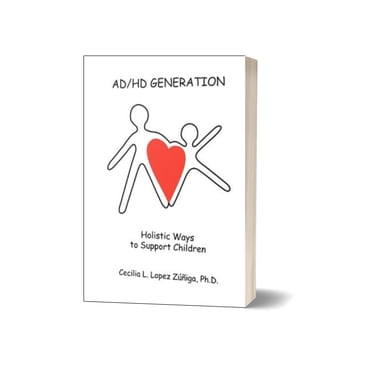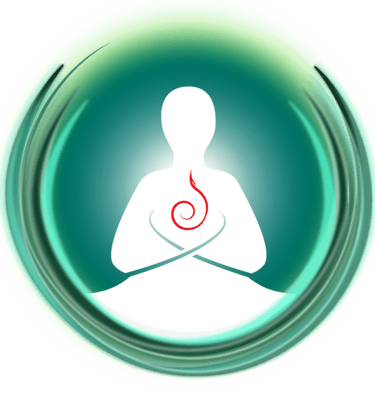The controversy behind AD/HD
The AD/HD diagnosis impacts thousands of lives, so how do we best serve its complex symptom profile?
CL Zúñiga
7/11/20255 min read


Years ago in 2005 when I dove into writing my first book AD/HD Generation: Holistic Ways to Support Children, I had no idea what I was getting into. The book was inspired by parents seeking non-prescription alternatives to calm children's symptoms at a time when Attention-Deficit Hyperactivity Disorder or AD/HD was the bandwagon diagnosis in the public schools. With so many worried parents asking for advice, I wanted to create a parent-friendly booklet that explained both the medication and non-medication options available so they could make well-informed decisions for their child. That booklet quickly turned into a +500-page book that I had to scale down.
You see when I was a School Psychologist in the 1990s and early 2000s, AD/HD was all you heard about. Teachers and parents alike were scrambling for help. Many schools were pressuring parents to put their kids on prescription medications, wanting to support their educational success. I got concerned as lines of kids began to grow in the hallway, waiting outside the nurse's office at lunch to get their "AD/HD meds."
What I learned about Attention-Deficit Hyperactivity Disorder
While researching everything attention-deficit/hyperactivity disorder for this book, I learned many things about the diagnosis that disturbed me. Firstly I learned that the American Medical Association gave pediatricians permission to prescribe pharmaceutical medications marketed for AD/HD to children as young as two years of age with no research on their side effects and long-term implications on developing brains and bodies before age 10. At that time pediatricians were not the gatekeepers of prescriptions for pharmaceutical drugs. Psychiatrists were. And the specific drugs being marketed to treat symptoms of AD/HD were in the category considered dangerous psycho-active narcotics that were closely monitored by the FBI.
At that time, prescription drugs were not viewed as a first line of treatment for anyone and definitely not for children that young. Prescriptions were held as a last-line of treatment after all other treatments had failed and certainly not without collaborative interventions already in place. Yet pediatricians began writing prescriptions for the drugs on a regular basis. It was a reckless and dangerous development for preschool and school-aged children that still haunts me today.
Secondly I confirmed that despite more than 100 sudden deaths of school-aged children as a direct result of taking their prescription medications for AD/HD, doctors continued to prescribe them and the pharmaceutical companies continued to profit and claim they were safe. I found this odd in light of the fact that drugs like Fen-Fen for example, a popular weight loss pill back then, was fairly quickly pulled from the market after fewer deaths than that were associated with it. The USA consumed more AD/HD medications than most of the other countries in the world combined. Plus the pharmaceutical industry lobbied hard and made billions of dollars off of the drugs.
Thirdly I felt that way too little attention was given to the impact of other variables on children as a part of their diagnostic evaluation for AD/HD. The problem with this comes down to symptom profiles. The fact is that the symptom profile associated with a diagnosis of AD/HD closely overlaps with symptom profiles resulting from any number of other variables such as birth trauma, illness, environmental, emotional, dietary and familial stressors such as poverty, neglect or abuse in a child's life. All of these can negatively impact children's functioning and behavior in a way that mirrors AD/HD symptoms.
Fourthly, there is a high degree of overlap in the symptom profile associated with a diagnosis of AD/HD and that of other diagnoses. What we call "AD/HD" is not such a straightforward diagnosis that can easily be made on symptoms alone, yet that is what I witnessed over and over again. Back then students were automatically viewed as "potentially AD/HD" by school staff if they did anything but exactly what teachers wanted. It seemed that one suggestive word from a teacher and students were referred for an evaluation.
Finally I discovered research by numerous psychiatrists and psychologists that pointed to a curious reality. Although AD/HD was being called a brain disorder, the vast majority of those being diagnosed had never had an insult or injury to the brain that would substantiate such a diagnosis. To be a true brain "disorder" there would be some indicator of an event that resulted in the brain not functioning normally. Yet the vast majority of those being diagnosed with AD/HD had no evidence in their history of such an event. Beyond that, some research showed that the brains of individuals who took AD/HD medications were actually shrinking in size over time, a concerning finding.
The AD/HD bandwagon resulted in millions of students being diagnosed with AD/HD at a time when little was understood about what it actually was or how to best treat the symptoms that got associated with it. Stories began to surface of kids appearing "numbed out" at school from their AD/HD meds, parents and others stealing kids' AD/HD meds for themselves, and teens selling their AD/HD meds to peers. These stories were concerning to say the least, and some professionals began to research and question the validity of the entire AD/HD diagnosis, calling it a mistake.
The good and bad about the diagnosis
One helpful part of the rapid evolution of the AD/HD diagnosis may have been that many school-aged children who truly needed support to succeed were more likely to receive it, even if it was for an inaccurate profiling. The problem with it was that since students' school records follow them throughout their entire school career, any diagnostic label put on them stays with them as an identifier until they graduate and beyond. This can be helpful when the records are accurate but it can be devastating when they are not.
Society sees a diagnosis and makes assumptions about the person that may or may not be true. Yet this is the point of the entire psychiatric Diagnostic and Statistical Manual—to provide a profile of what to expect in relation to a diagnosis. When held loosely this may be useful, yet when used inaccurately or rigidly to box people into profiles, it can be hugely problematic, effectively neutralizing individuality and life experience.
Do we have answers?
So what is really going on when we consider AD/HD? There is no question that what we point to as the symptoms of AD/HD are real and many suffer from them. These symptoms can disrupt a person's ability to function and interact in society. Yet the debate over whether AD/HD is an actual diagnosable brain disorder still carries some controversy.
The question remains—is there a true brain disorder known as AD/HD? Do we know what causes its symptoms? Do we know how to treat the symptoms? These issues are still debated today. Yet one thing seems true—what we call AD/HD does not fit a "one size fits all" profile or treatment approach, although some folks still believe it does.
Why I wrote the book
I wrote AD/HD Generation to give parents a helpful guide they could use to understand the controversy surrounding the AD/HD diagnosis and treatment. I wanted them to know how to access valid non-prescription options for managing their children's symptoms. And I wanted them to have a resource on hand to help them navigate those options. This book is a labor of love for them. Its cover image came to me in a dream and is still a favorite of mine.
Now some 16 years and 8 books later, I have a better idea of what it means to take on a project such as this one. What kind of writer I am is debatable because I don't sit in any one category. I write when I feel called to and about what calls. I write about a broad many things that reflect my interests and inspire me in hopes that I might inspire others too. As always, thanks for reading.

